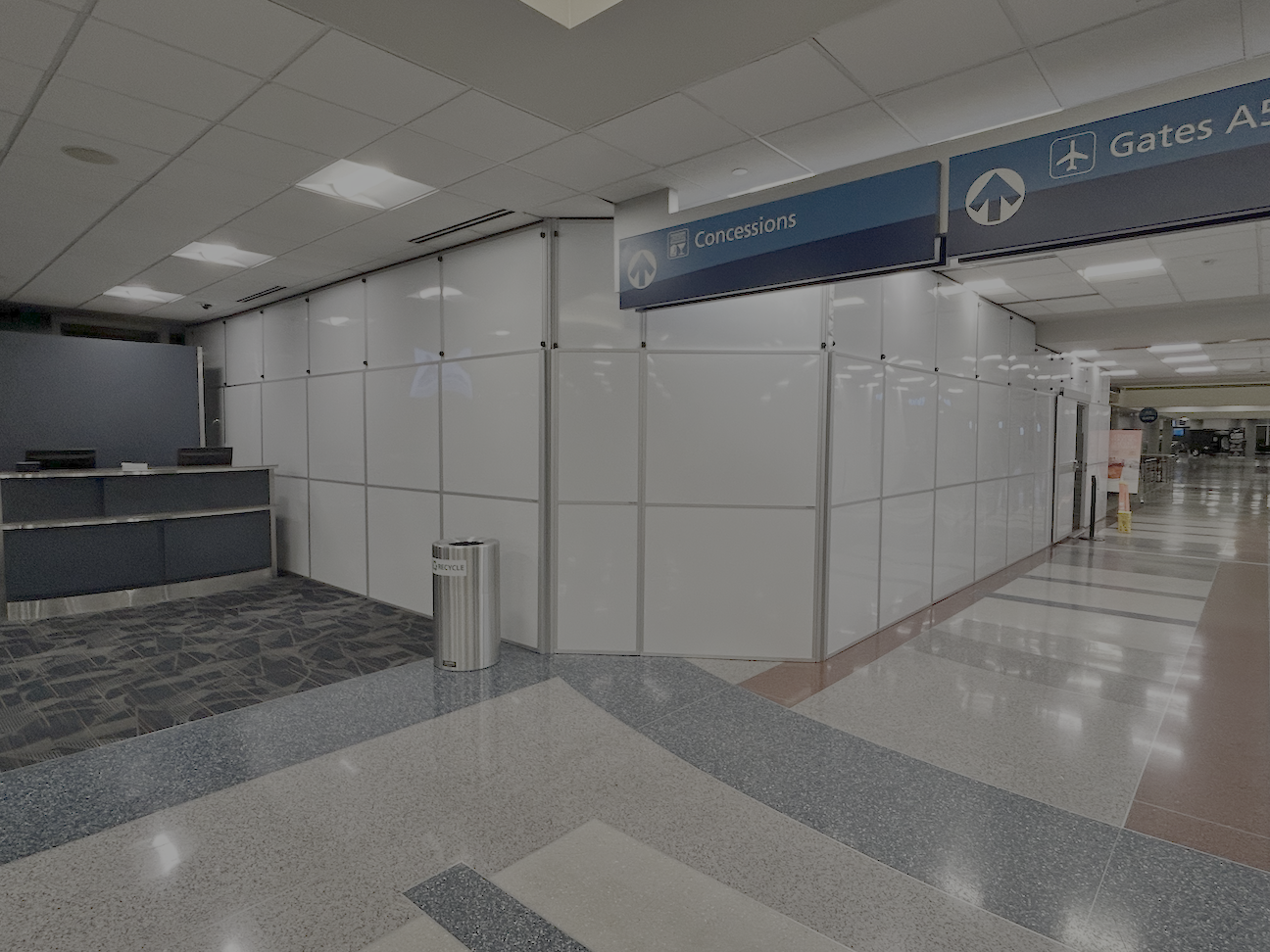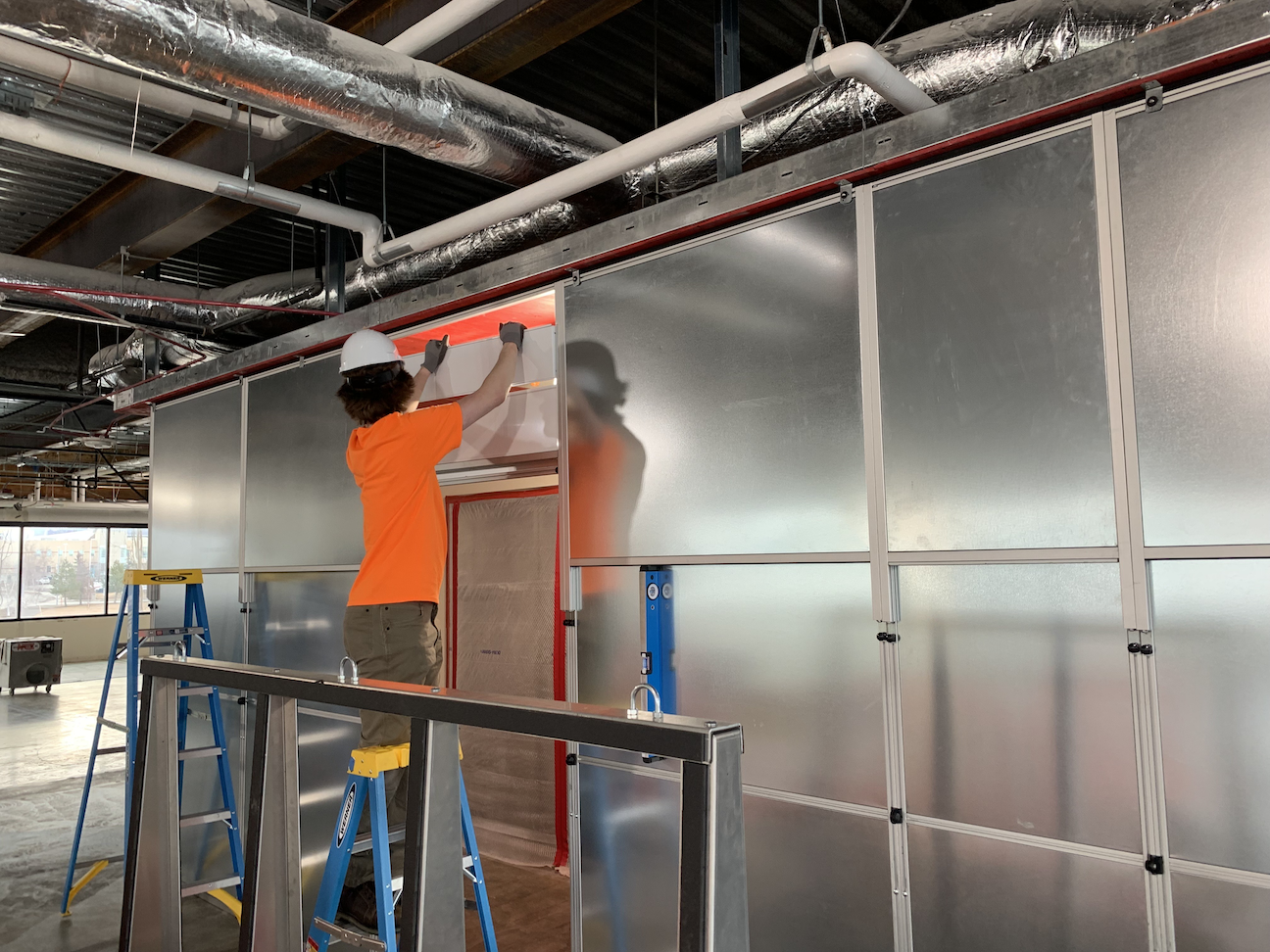In recent years, data center containment using modular containment rooms has become a popular solution because of the improved efficiency compared to the traditional cooling and security methods. In this blog, we will explore the application of modular containment rooms in data center environments, focusing on their primary functions of safeguarding sensitive equipment and optimizing airflow for effective cooling.
Why Data Centers Need Containment Rooms
Containment rooms are crucial for protecting sensitive equipment in data centers. These rooms help to keep out dust and maintain a clean and controlled environment that is essential for the optimal functioning of IT systems. Containment rooms not only protect equipment but also enhance reliability and longevity.
Airflow Management
Effective management of airflow in data centers is essential for maintaining optimal efficiency. Containment room systems separate hot and cold air, preventing unwanted mixing and ensuring that cooling units operate efficiently. This system reduces energy costs and also maximizes the overall cooling capacity of the data center, contributing to sustained operational efficiency.
Dust Protection
The need for containment is non-negotiable as dust in data centers poses a particular danger to sensitive equipment. These equipment are vulnerable to environmental factors, making it essential to have adequate dust protection in place.
Dust can threaten data centers, including equipment downtime and potential fire hazards. Dust accumulation on equipment may prevent fans from functioning efficiently, causing them to overheat and eventually resulting in a fire.
Modular containment is vital in creating a controlled environment that enhances equipment efficiency and safeguards sensitive hardware from dust. Modular wall systems provide airtight containment of dust and debris within data centers, allowing you to maintain a clean environment to protect important tech. Additionally, they are designed to prevent overheating or overcooling of your critical equipment, ensuring that telecommunications and data center facility operations run smoothly with zero disruption.
Airflow in Data Center Containment
A standard large-scale data center can produce anywhere from 20 to 50 megawatts of heat. Data center containment is crucial for energy efficiency. Creating cooler rooms by directing proper airflow is an effective way to manage energy costs by dissipating heat. Containment systems that utilize hot and cold aisle arrangements can reduce energy expenses from 5% to 10%.
Types of Containment Solutions for Data Centers
Each data center is distinct, requiring various factors to identify the best containment strategy. To find the right solution for your data center, you’ll need to analyze factors such as room layout, budget, and long-term objectives. The types of data center containment are below.
Cold Aisle Containment
Cold Aisle Containment (CAC) utilizes ceiling panels and end doors to enclose the cold aisle, directing cold air from floor tiles to server equipment inlets. This focused cooling technique prevents cold and hot air mixing, allowing for efficient cooling of heat loads up to 10-15kW and even exceeding 30kW with Inrow cooling in combination.
Hot Aisle Containment
Hot Aisle Containment (HAC) involves using a barrier to direct hot aisle exhaust airflow upward to the CRAC (computer room air conditioner) return, effectively separating the hot exhaust air from server racks. It enhances energy efficiency compared to no HAC, although it may increase cooling and power demands due to larger fans needed to overcome added pressure drops.
Chimney Systems
The chimney system employs a solid metal chimney, guiding hot air from the top rear of IT racks to the ceiling return air plenum. Notably compatible with most data centers, it can be easily installed on existing enclosures, offering enhanced flexibility in configuration and contributing to cost-effective cooling.
Curtain Systems
Data center curtains, known for their economic energy-saving solution, incorporate materials commonly used in clean rooms. In case of a fire, these curtains will drop before the fire suppression system is triggered making sure to save as many servers as possible.
Hard Panel Systems
Specifically designed for cold or hot aisle containment, hard panel systems are conveniently pre-assembled for quick installation. With a distinctive hard panel roof, these systems efficiently separate hot and cold air, optimizing the cooling efficiency of data centers. The roof attaches to the rack’s top, fully supported by the racks, and lies flat to prevent interference with overhead obstructions. In the event of a fire, the roof panels drop away, facilitating the operation of the overhead suppression system within the aisle.
Modular Systems
Modular containment addresses key areas where hot and cold air mix, including containing cold air in cold aisles, preventing airflow over rack tops, directing hot air to cooling units, filling gaps between racks, and stopping conditioned or exhaust air from flowing around equipment rows. The four major benefits include reducing supply airflow volume, preventing hot air recirculation over racks, eliminating hot air recirculation around rows, and preventing bypass and recirculation of air in gaps between racks. These benefits translate into reduced operating costs, improved temperature control, and increased efficiency for data centers.
Aisle End Doors
Aisle End Doors efficiently optimize data center design and operation by closing aisle ends, enhancing overall efficiency, and preventing hot/cold air mixing. These doors, ideal for hot aisle/cold aisle containment, offer easy configuration to existing setups and boast increased cooling capacity.
In-row Cooling
In-row cooling offers targeted cooling for data center server cabinets positioned on the floor or suspended overhead for proximity to racks, ensuring capacity and efficiency gains. The cooling solutions, whether using chilled water or refrigerant, feature fans and a coil. Benefits include reduced travel distance for warm and cool air, rapid dissipation of high heat loads, and a scalable approach to data center cooling.
Benefits of Temporary Wall Systems for Data Centers
Opting for modular wall systems in data centers offers a practical approach to protection from environmental factors and optimizing hardware with effective cooling. Here are the advantages of our data center containment solutions using modular containment walls.
- Easy to Rent: Pay only for the duration you require your modular wall system. When done, we’ll retrieve it, leaving no trace behind.
- Less Waste: Unlike drywall, our reusable and sustainable modular wall systems eliminate excess construction debris and dust after your project is done.
- Temperature & Noise Control: Modular walls for data centers feature a 1.5-inch thick urethane foam core, ensuring proper temperature control and reducing noise from adjacent areas.
- Scaled to Your Needs: Our modular wall systems are adaptable to any space size and can be customized to suit project requirements. Contact us for a tailored estimate.
- Turn-Key Service: Beyond delivering your modular wall system, our team of experts handles installation, providing a turn-key service that eliminates additional tasks from your to-do list.



